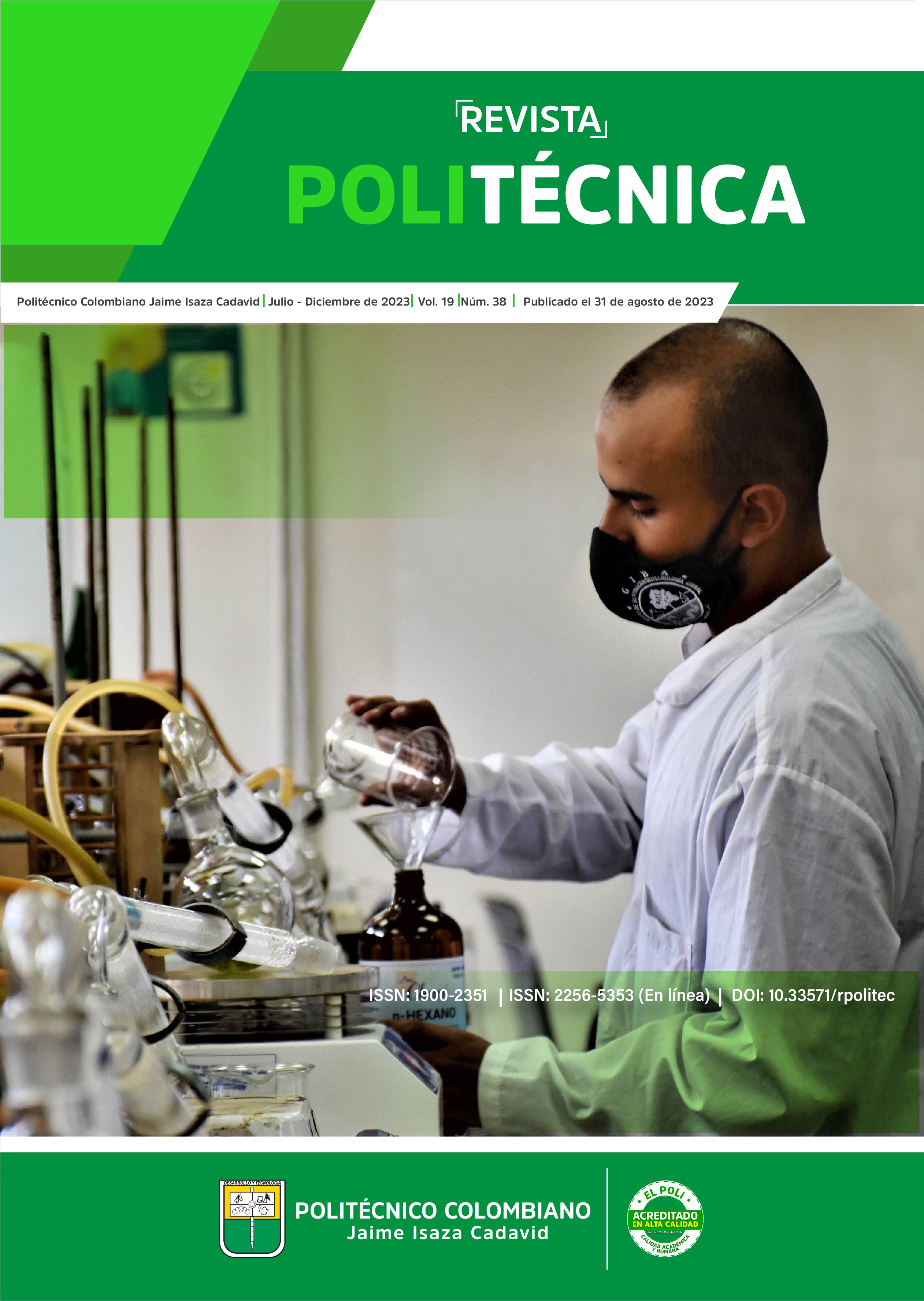Efficiency of the use of species such as (Gramineas and Fabaceas) in soils disturbed by clay mining in the mine "El cielo" corregimiento de Valencia de Jesús-Cesar.
DOI:
https://doi.org/10.33571/rpolitec.v19n38a3Keywords:
Arcilla; gramíneas; suelo; fabáceas.Abstract
This research focused on the implementation of different species to evaluate their efficiency in soils disturbed by clay mining. A part of the land was taken and a physical-chemical and microbiological characterization was made to know the conditions of the soil under study before applying the species, then it was divided into four plots of equal measures, of 1.5x1 m, one control and three in which we applied the respective species, this with the objective of evaluating the efficiency of the interaction of the species in the soil contaminated by mining. This study revealed the great capacity of grasses (Maize, star grass and brachiaria grass), and Fabaceae (Yaguaro and Acacia Riparia Kunth), to provide organic materials and nutrients that allowed the evaluation of the efficiency or reactivation of the contaminated soils. It should be noted that the one with the highest efficiency was plot three.
Article Metrics
Abstract: 279 PDF (Español (España)): 156 HTML (Español (España)): 54PlumX metrics
References
Paradelo, R. 2013. Utilización de materiales compostados en la rehabilitación potencial de espacios afectados por residuos mineros y suelos de mina. Boletín Geológico y Minero, ISSN: 0366-0176, 124 (3): 405-419
Oldeman, L. y Van Lynden, G. 1998. Revisiting the GLASOD methodology. Methods Assess Soils Degrad Advances Soils Science Series: 423-440. Internet.
Ramírez, (1997). propiedades físicas químicas y biológicas de los suelos. recuperado de http://bibliotecadigital.agronet.gov.co/bitstream/11348/6636/1/083.pdf
Desgarannes y Carrión, 2019. Las bacterias que ayudan a las plantas a crecer. Recuperado de: https://www.inecol.mx/inecol/index.php/es/ct-menu-item-25/ct-menu-item-27/17-ciencia-hoy/1360-las-bacterias-que-ayudan-a-las-plantas-a-crecer
Villaroel, 1988. Manual práctico para la interpretación de análisis de suelos en laboratorio. Recuperado de: http://atlas.umss.edu.bo:8080/jspui/bitstream/123456789/142/1/MANUAL%20PRACTICO%20ST10.pdf
Taboada, M.A.; Alvarez, C.R. 2008. Fertilidad física de los suelos. 2da Ed. Editorial Facultad de
Agronomía. Universidad de Buenos Aires.
Aguilera S., S. (2000). Importancia de la protección de la materia orgánica en suelos. Repositorio Académico de la Universidad de Chile. http://repositorio.uchile.cl/handle/2250/121065.
Paredes, M. C. 2013. Fijación biológica de nitrógeno en leguminosas y gramíneas [en línea]. Trabajo Final de Ingeniería en Producción Agropecuaria. Facultad de Ciencias Agrarias. Universidad Católica Argentina. Disponi-ble en: http://bibliotecadigital.uca.edu.ar/repositorio/tesis/fijacion-biologica-nitrogeno-leguminosas.pdf
LERMA, T.; COMBATT, O.; PALENCIA, M. 2015. Efecto de la temperatura sobre coloides de
suelos agrícolas mediante dispersión dinámica de la luz. Rev. Cienc. Agr. 32(2):94 - 103. doi: http://
dx.doi.org/10.22267/rcia.153202.17
Intagri, 2019. La Capacidad de Intercambio Catiónico del Suelo. Extraído de https://www.intagri.com/articulos/suelos/la-capacidad-de-intercambio-cationico-del-suelo
Señales de la AEMA, 2019. Ciclo de nutrientes de la naturaleza. Extraído de: https://www.eea.europa.eu/es/senales/senales-2019/infografia/ciclo-de-nutrientes-de-la-naturaleza/view
Departamento Técnico Yara, 2021. El Zinc y el crecimiento de las plantas. Extraído de: https://www.metroflorcolombia.com/el-zinc-y-el-crecimiento-de-las-plantas/
Inta-costa rica, 2015. Análisis microbiológicos de suelos. Recuperado de: http://www.mag.go.cr/bibliotecavirtual/Av-1820.PDF
Published
How to Cite
Issue
Section
License
Copyright (c) 2023 Karina Paola Torres Cervera, Gabriela Carolina Higidio-Ferrer, Camilo Andrés Baquero-Castilla, Adriana Carolina Royero-Ibarra, Yecid Gafit Acevedo-Duran

This work is licensed under a Creative Commons Attribution-NonCommercial-ShareAlike 4.0 International License.


























